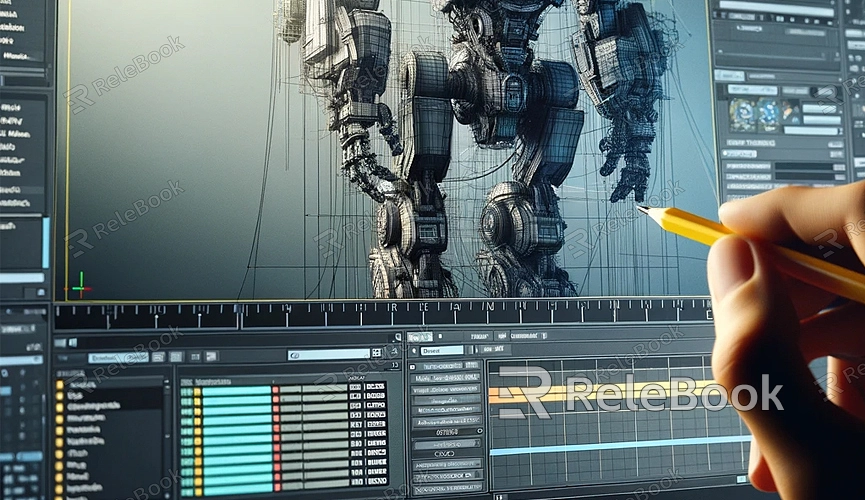Creating a Robot Model Tutorial in C4D
How to build and animate a robot model in C4D? Constructing a robot model in Cinema 4D (C4D) involves various techniques and methods, with plenty of crucial details to consider. Today, let's briefly introduce a fundamental tutorial on robot modeling in C4D that might be helpful to you.
Preparation:
1. Open Cinema 4D R19 or a higher version.
2. Navigate to "File" in the top menu bar, then select "New" to create a new scene.

Part One: Body Structure
1. Creating Basic Shapes:
Choose "Cube" from the "Geometry" object library in the toolbar and drag it to the viewport.
Adjust the cube's size and position using the parameters under the "Transform" tab.
Repeat this process to add other parts to the robot, such as the head, torso, arms, and legs.
2. Assembling Components:
For parts that need to connect, use the "Connect" tool (shortcut: Ctrl+J) to combine them.
Ensure each part is properly positioned and perform necessary scaling and translation.
3. Adding Details:
Refine individual parts by adding features like circular shapes for eyes or using subdivision surfaces to enhance surface smoothness.
Edit the mesh by selecting points, edges, or faces, then adjust their shapes using the move, rotate, or scale tools.
Part Two: Mechanical Elements
1. Adding Mechanical Parts:
Create cylinders, toruses, and other geometric shapes for the robot's joints and details.
Use the "Align" tool to precisely align these elements with the main body structure.
2. Employing Splines:
If your robot design includes complex curve elements, utilize spline tools to draw outlines and convert them into editable objects.
3. Applying Textures and Maps:
Employ the material editor to give the robot suitable metal, plastic, or other material textures.
Apply textures to respective surfaces for increased realism.
Part Three: Animation
1. Setting Keyframes:
To animate the robot, set keyframes for its various parts.
Select the object to move on the timeline, then click the "Set Keyframe" button (shortcut: F6).
2. Editing Motion Paths:
Edit the motion paths between keyframes on the timeline to achieve desired robot movements.
3. Rendering Animation:
Once satisfied with the animation, configure output options in the "Render Settings" window.
Render the completed animation sequence and perform post-processing as needed.

